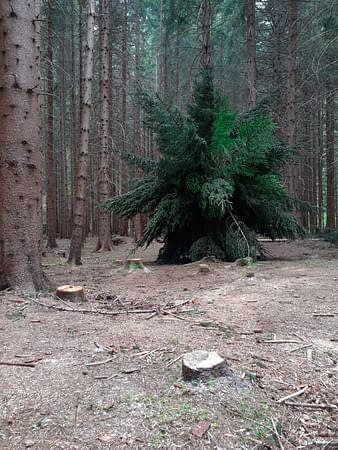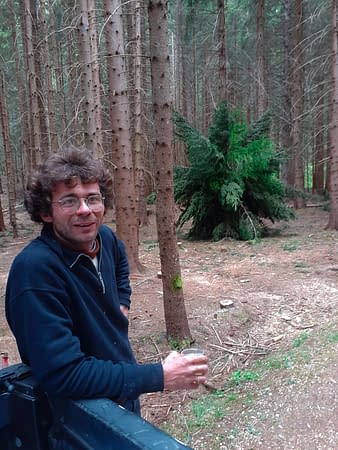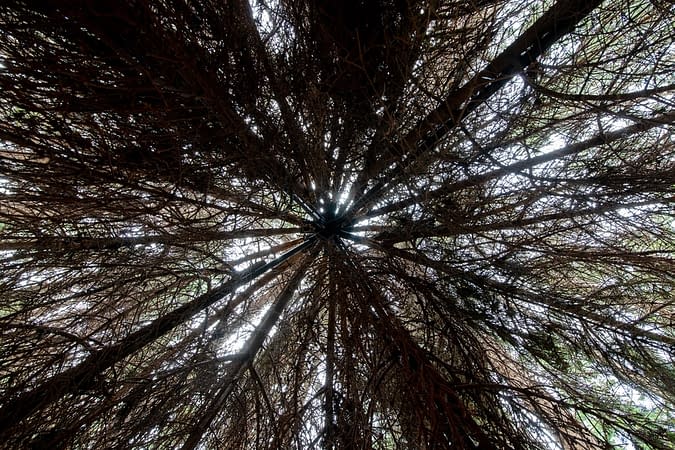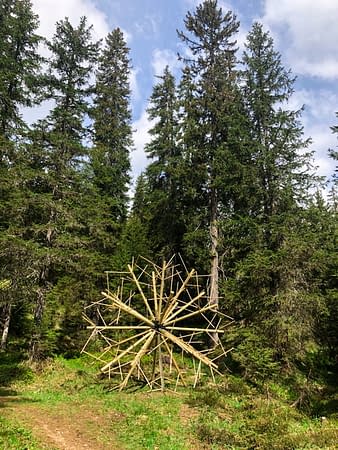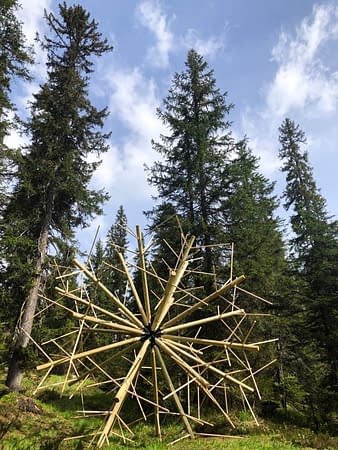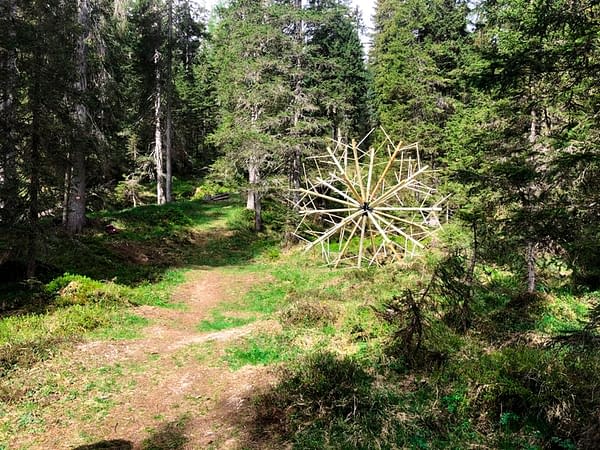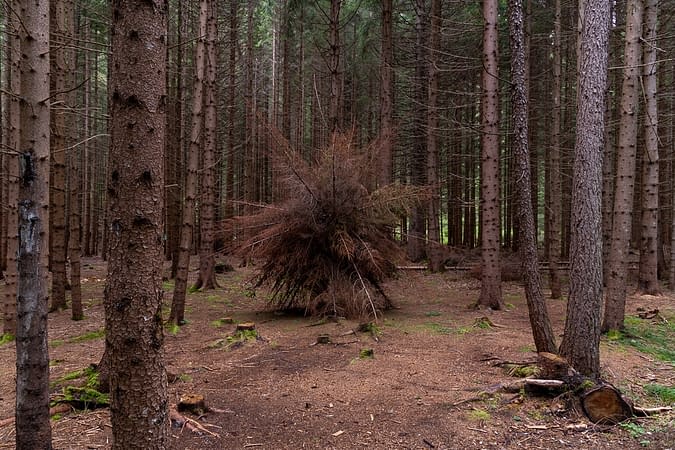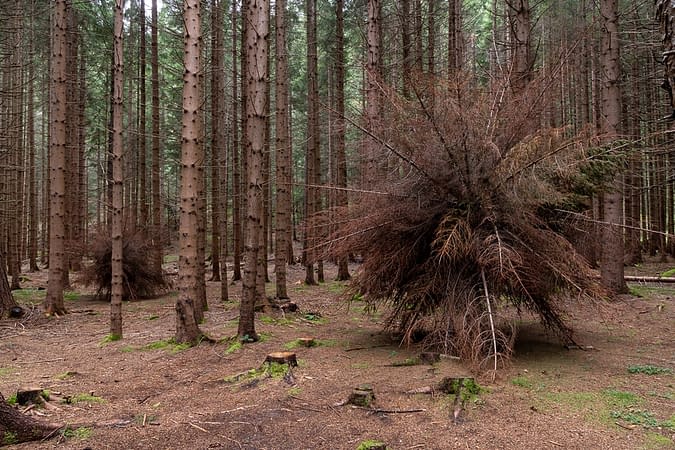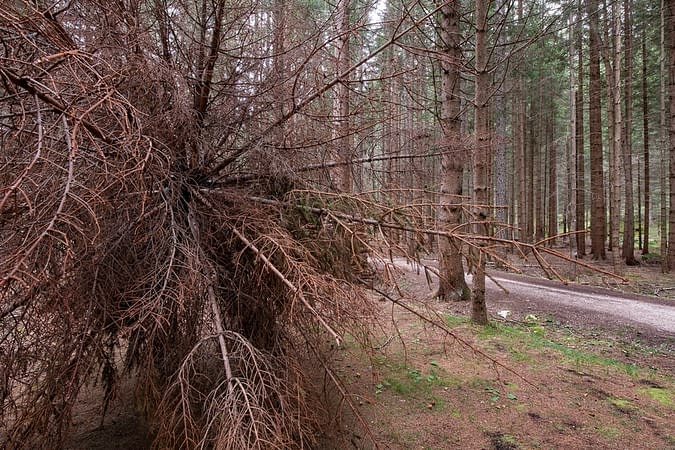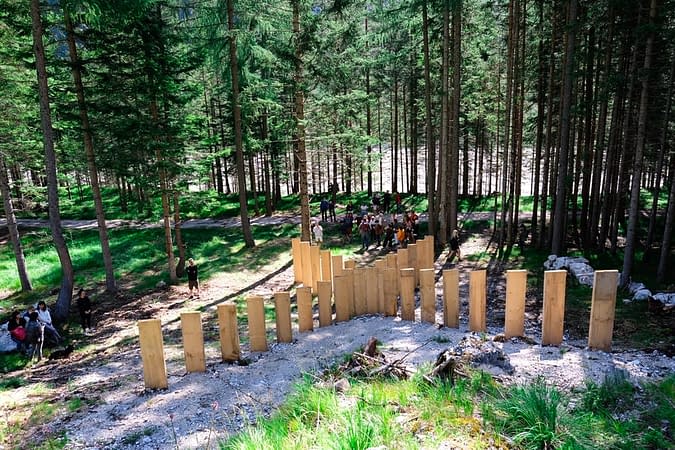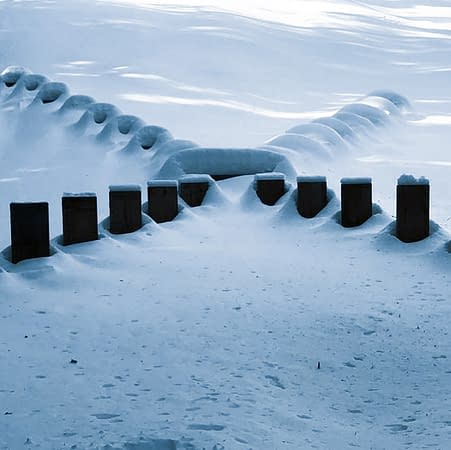The voice of time
by Fulvio Chimento
Acting artistically on places is a complex operation, which requires particular care and careful evaluation of the different issues that arise along the way. Creating an artwork always represents an act of responsibility on the part of the artist, even more so when he intervenes in prestigious contexts. I believe that the artists’ choice of being involved in site-specific projects is affected by three main factors: quality of production, adaptability to teamwork, understanding of the territory (real and human). In recent years I have created exhibitions for institutional spaces – museums, galleries, foundations, historic residences – and with the same intensity I have tried to measure myself with areas that are considered more “uncomfortable” for art: former factories, archaeological parks, botanical gardens, mountain paths, spiritual places, have become locations in which proposing ideas through the multifaceted language of art is possible. Fossil Archipelago is the last chapter of this journey, which is enriched by the collaboration with Carlotta Minarelli, with whom we have shared choices, opinions and enthusiasms in recent years.
The preliminary study phase of the project was aimed at getting to know the Ampezzo community: we had the ambition of creating an exhibition that was a direct expression of the way in which the inhabitants of the place relate to the naturalistic context. How could we do this? By creating a human bond with the people who live in a given community through the act of listening, which allowed us to implement a common vision without distorting the founding ideas of an artistic intervention. The intention was to offer a discordant look with respect to the one usually ridden by mainstream communication in relation to Cortina, demonstrating with facts how culture can be a driving force from an experiential point of view also for quality tourism. Fossil Archipelago concentrates its focus on the geological history of the Dolomites, identifying in this theme a sort of “zero degree” in which the community and the artistic research itself can recognize and dialogue.
The Dolomites are described by experts as a “fossil archipelago” because this area, before forming by orogeny with the African fault, was a warm ocean with a large coral reef, a feature that these mountains share only with the Himalayas. The Dolomite archipelago was born in the Triassic period (240 million years ago); in the Sea of Tethys, as this ocean is called, carbonate buildings grew, built over millions of years by living beings called bio-builders: sea urchins, sponges, algae, corals and molluscs lived colonizing the heights of the seabed. The idea of involving Alessandro Ferri (Dado), Federico Tosi and T-yong Chung along the path of Gores de Federa and Pian de ra Spines stems from the attitude of these two artists to model the material and the ability to compete with site projects -specific through the use of sculpture and installation. Fossil archipelago welcomes the challenge of setting up an upward exhibition in a path immersed in a wood, crossed by a river, opening to the spectators a dimension of relationship and integration between art and nature. The works are conceived as potential fossil forms, they suddenly manifest themselves by moving the surprise and wonder that a crevasse, a breathtaking view or a waterfall give in the viewer.
In developing the works, designed specifically for Fossil Archipelago, each artist focused on one of the biological realms of creation. T-yong Chung has dealt with the human sphere connected to the intellectual and spiritual component, creating resin portraits of important personalities. The chosen subjects represent a varied sample of humanity: artists, poets, thinkers, men and women, such as Fernanda Wittgens, the first woman to direct a museum in Italy (the Pinacoteca di Brera), Giuseppe Verdi, Antonio Canova’s boxer, Giovanni Testori, but also the portrait of the artist’s wife and a neighbor who recently immigrated to Italy. The installation intervention, entitled I feel someone…, consists of eight sculptures, which reflect an aesthetic, intellectual and human ideal, an expression of the way in which the artist relates to everyday life. For the first time in his production, T-yong Chung adopts the technique of overlapping portraits, while the face of Lucio Fontana remains in line with his usual stylistic code that finds expression in the erasing of the single portrait. The famous artist is presented frontally and is studded with eyes arranged on the trunk of the tree on which the work is set up: the eyes celebrate a fundamental character for the history of art, who was able to look beyond the surface, directing his own research towards spatiality and emptiness.
The two-faced portrait of Francis of Assisi, on the other hand, is suspended in the air (hung with a transparent thread) inside a cave dug over the centuries by the Ru Federa?: the work sways slightly due to the wind, almost breathing in the vapors coming from the waterfall below. The work can be appreciated by entering through a fracture in the rock: the intimate and cozy environment recalls one of the places chosen by the saints to spend periods of hermitage. The relationship between work and environment travels on tracks of perfect commonality.
The spiritual component already present in the work of the Korean artist is greatly amplified by the naturalistic context, as is the sense of mutability inherent in his work. Nature is pervaded by the principle of transformation and communion with the universe: Untitled and Birds on untitled are works composed with assemblies of chairs recovered by the artist in an artisan workshop active in Veneto. The wood of the chairs now inhabits the woods again as an installation, regaining its original nature.
In recent years I have had the pleasure of actively collaborating with Alessandro Ferri (Dado) in different projects that have allowed me to see some uniqueness of his work. Dado shows a natural aptitude for competing with large surfaces, due to his long experience in research in the field of writing (of which he is one of the leading exponents at an international level), this allows him to master the installation process in a fluid way with an impressive set up in an outdoor environment.
For Fossil archipelago Ferri focuses on the plant sphere, creating two types of installations that refer to the shape of the dandelion, the first is set up at the opening of the path in Gores de Federa, through the use of industrially worked wood, the second is composed with fir tops fallen into the woods during the early 2020 snowfall. The two types of works are conceptually different from each other. The first dandelion has roughness that goes well with the conformation of the Gores de Federa path and with the bare, solitary, inaccessible peaks of the Dolomite mountains. The work stands out against the landscape and offers itself to the visitor through an almost infinite range of points of view that determine its intrinsic meaning. The three natural spruce dandelions that run parallel to the Pian de ra Spines path, on the other hand, inserted directly into the wood, can be read both as mechanical assemblies in slow motion, and as magical (and fairy-tale) agglomerations of the condensing energy of nature. Both of these interventions arise from Ferri’s idea of acting in nature from a phonetic-musical point of view: the works are imagined as a composition of notes and different moods that trace their artistic form in the sound of the letter “O ”, Which is also reminiscent of dandelion puffs.
The large “X” set up by Ferri in Pian de ra Spines with fir trunks deserves a separate mention: the work must be read in relation to the landslide above that characterizes this part of the path, causing a break in the landscape. The “X” stands out as a symbol of precariousness, a puzzle to be solved, which aims to stimulate questions and suggestions, a sign that refers to a code. Is it a letter or a numerical value? Is it an unknown, a target or a warning sign? A symbol of negation or an end? In its deepest sense it symbolizes the loss of a rational language in the face of nature, and at the same time it is an indicator of the inner need to feed on inexhaustible research.
In relation to the exhibition Federico Tosi manifested the fossil sphere. Fossil archipelago seems specially designed to enhance the research of the Milanese artist. Tosi’s works perfectly interpret the idea of the accidental discovery of the artefact-works. PLATOON in Gores de Federa evokes the theory of Panspermia: the “seeds of life” traveling scattered throughout the Universe and, transported by comets and meteors, have allowed the genesis of life on Earth, finding here, unlike other planets, the conditions ideal for taking root. The theory draws on the ideas of the Greek philosopher Anaxagoras and is revived in more recent times thanks to the studies of astronomers Fred Hoyle and Chandra Wickramasinge. PLATOON is a work of considerable size, set up towards the end of the path: an unexpected intervention, formed by twenty spheres of various sizes made of concrete and coated with liquid resin, which unfold along a hilly area of the path. Tosi seems to want to tell an ancient landscape: a seed, or an alien mushroom grown by pollution, endowed with its own intelligence, has tried to expand, to colonize the area, without succeeding. What is observed is the fossil form of an indefinite presence, an archetype of existence, a lifeless graft set like rough stone in the geometric perfection of the forest.
During the months of the exhibition, the work has undergone significant transformations. The exhibition audience created grooves inside the installation, which diverted the usual course of the path. PLATOON reflects the idea of a work donated to the forest: remaining set up over the years, it will continue to change significantly according to the atmospheric agents of the Dolomite climate.
Before coming across PLATOON, the observer encounters two distinct works by Tosi made in pigmented concrete and entitled Untitled (purple ammonite) and Untitled (fragment of starry ammonite): these are works, arranged near the river, which constitute an installation only. The first is a large ammonite set in the rock wall next to the water, while the second is made up of a set of starfish inserted directly into the riverbed. The context enhances the individual works, the natural landscape and the geological conformation of the Dolomite rocks, which form the background to the works. The ammonite and the starfish, as symbols, return the voice of time, as artifacts that allow them to be read and interpreted, while the concrete of which they are formed is subject to the same slow disintegration process to which the fragile peaks that make up the magnificent Dolomite archipelago are.
The wood, like a temple, welcomes and preserves the works of the artists and plays a nourishing role for the entire community.
